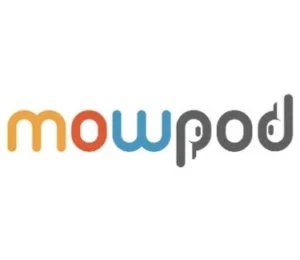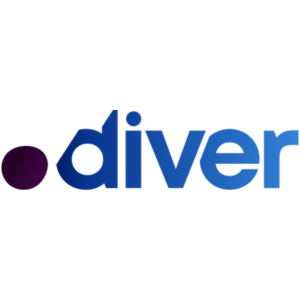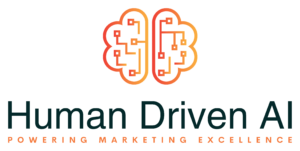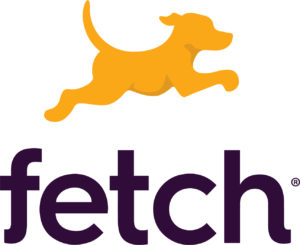The Use of Positive Reinforcement in Marketing — Will Fraser // SaaSquatch
Will Fraser
SaaSquatch
Will is the CEO at SaaSquatch, the world’s first special offer management platform for digital services. He co-founded SaaSquatch after seeing the huge amount of effort companies were spending to hack existing billing and marketing systems to support their special offer marketing needs and still coming up short.
- Part 1Scaling and Tracking Word-of-Mouth — Will Fraser // SaaSquatch
- Part 2 The Use of Positive Reinforcement in Marketing — Will Fraser // SaaSquatch
- Part 3Growth and Loyalty Loops — Will Fraser // SaaSquatch
Show Notes
Quotes
-
“First disclosure here is I’m not a behavioral psychologist, I’m an engineer masquerading as a marketer. But I think we can all relate to that time where we had a wonderful customer service interaction.” - Will“When we as a person are interacting with a company, when a company brings that same level of positivity, we just build that positive dopamine hit. We are willing to do that again and we are willing to do that with companies.” - Will“Your answer to my question brings up a story of the time I gave the biggest tip. I went to my favorite restaurant in San Francisco, my wife and I were with other friends, we started talking to the people next to us and the woman’s cat had died. She was really sad and so we decided that we, (we were in our 20s), we’re gonna buy her a shot to try to get over it and continue to have a nice conversation.” - Ben “The bartender came over and heard the story and realized that we were being nice so he started bringing us food and drinks. And then this woman whose cat died friend came over and turns out he’s a high profile venture capitalist and he picked up our entire meal. And the bartender was like, ‘Alright guys thanks so much’ and we were like, ‘we’ll leave you a tip, you took care of us.’ So I left the guy a hundred bucks because our meal is gonna be 300 dollars. And now, every time I went back to that restaurant, that guy remembered me and took good care of me and I gave him a nice tip and it was the beginning of a beautiful relationship.” - Ben“Moral of the story is, when you have a nice experience with someone, you remember it and will re-engage with them.” - Ben“When you’re looking at that, our experience is to start looking at who are those customers that you wanna bring back and there are some really easy ways that we can start.” - Will“It doesn’t have to be an overly hard idea but it’s just looking at what are the key behaviors that we’re trying to drive and we can take a moment and be a human about it. If you are coming to my bar everyday, I would want to know your name, I want to thank you, heck I might wanna know when your birthday is, and maybe give you a free pint on your birthday or something like that. It's as simple as that. Find ways to say thank you.” - Will “But even those businesses I would say, understand that it’s cheaper to go ahead and sell to an existing customer to upsell, re-sell, cross-sell to an existing customer. I’m sure we learn this in our marketing journey but somehow we forget it when we’re looking at our budgets.” - Will“For us we see huge retention rates, and upsell rates within companies that have this positive behavior. So, it can be a straight math ROI, it will be different per business but generally speaking, saying thank you always brings back more.” - Will“It doesn’t actually have to cost a lot. It’s not that you gave me a $500 gift card, it's that you gave me anything. It’s that you rewarded me with anything. And that's why we find a lot of companies get really good at delivering that positive moment and drop a lot of cash on it.” - Will“The term ‘surprise and delight’ is something that I heard a ton sitting next to the product team when I was running the marketing team at a couple of startups. That’s actually really hard to do.” - Ben“From a marketing perspective, we think of the value of kindness and essentially that’s what you see in your retention rates and the way that you can evaluate this is you can run a test. What is the value of being nice to a subset of customers and see what the return rate looks like over the next period of times. I think that just as a general marketing or life philosophy, it’s kind to be kind and it’s nice to be nice.” - Ben “Today I think a lot of marketing is addicted to acquisition. They run on that idea of how I get more people to give us their information to sign up. But I think if you actually give positive reinforcement, what we’re trying to figure out is what are the key drivers of our business success. What are those things, we need people to do and then maybe what are things that they’re not doing.” - Will“You bring me to the next point which is positive reinforcement always sounds great but negative reinforcement is actually an effective tool and at times as well. Like, ‘Hey, sale is ending. If you do not take advantage now, you’re gonna miss out,’. That keeping up with the Joneses, the fear of loss.” - Ben “There is definitely a right time to use both types of messages. I think the fear and the negativity reinforcement is a much easier tool for us to use but it really comes down to that human psychology. We are risk-averse and the upside has to be substantially bigger than the risk for us to do it.” - Will“The time to use negative reinforcement is when you really need to push someone to make a decision. So, positive reinforcement helps build habits.” - Will“It’s a gentle nudge in the right direction and then it’s a shove in the back to get you over the finish line.” - Ben
- Part 1Scaling and Tracking Word-of-Mouth — Will Fraser // SaaSquatch
- Part 2 The Use of Positive Reinforcement in Marketing — Will Fraser // SaaSquatch
- Part 3Growth and Loyalty Loops — Will Fraser // SaaSquatch
Will Fraser
SaaSquatch
Will is the CEO at SaaSquatch, the world’s first special offer management platform for digital services. He co-founded SaaSquatch after seeing the huge amount of effort companies were spending to hack existing billing and marketing systems to support their special offer marketing needs and still coming up short.
Up Next:
-
Part 1Scaling and Tracking Word-of-Mouth — Will Fraser // SaaSquatch
“A really well done referral program is actually seen as a feature by your customers.” That’s one key takeaway in this episode with Will from SaaSquatch. We also discussed the tracking and analytics behind marketing referrals and weaving your referral program in the customer journey experience.
Play Podcast -
Part 2The Use of Positive Reinforcement in Marketing — Will Fraser // SaaSquatch
“The time to use negative reinforcement is when you really need to push someone to make a decision. But, positive reinforcement helps build habits.” That’s one of the key takeaways we have in this episode with Will from SaaSquatch. We also discussed what is the ROI for generosity, and using “surprise and delight” moments to your advantage.
-
Part 3Growth and Loyalty Loops — Will Fraser // SaaSquatch
“Loyalty is a euphemism for revenue optimization at its core when you break it down.” That’s one of our key takeaways in our final episode with Will for this series. We also discussed how loyalty loops right now have such ability and broad range where you can apply them as a revenue source.
Play Podcast


















